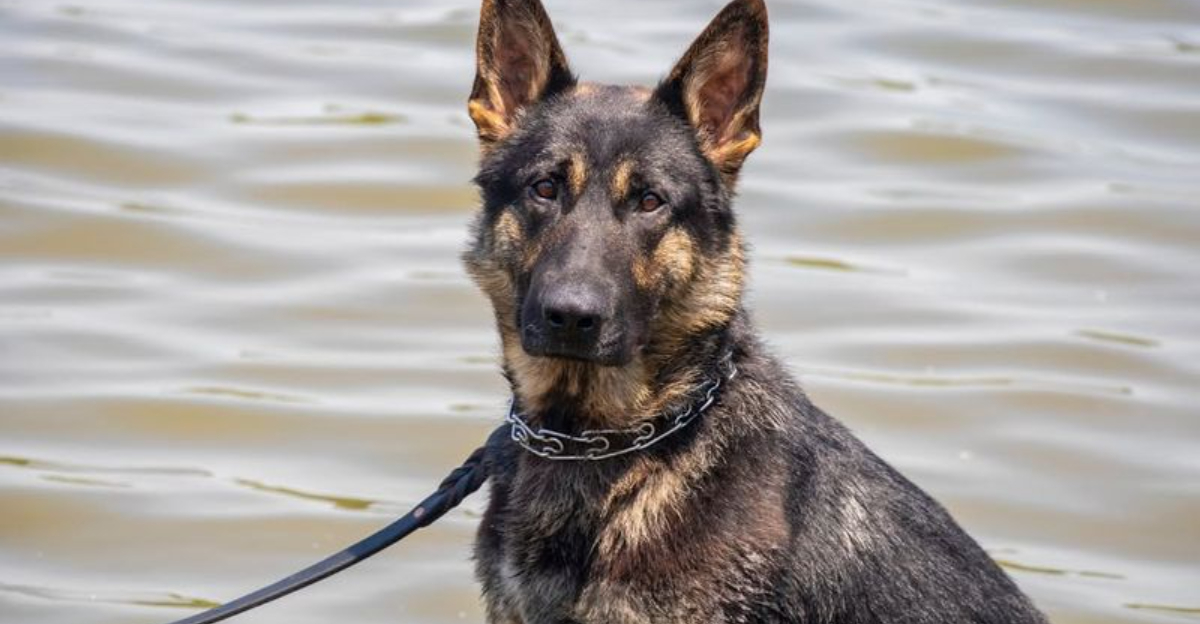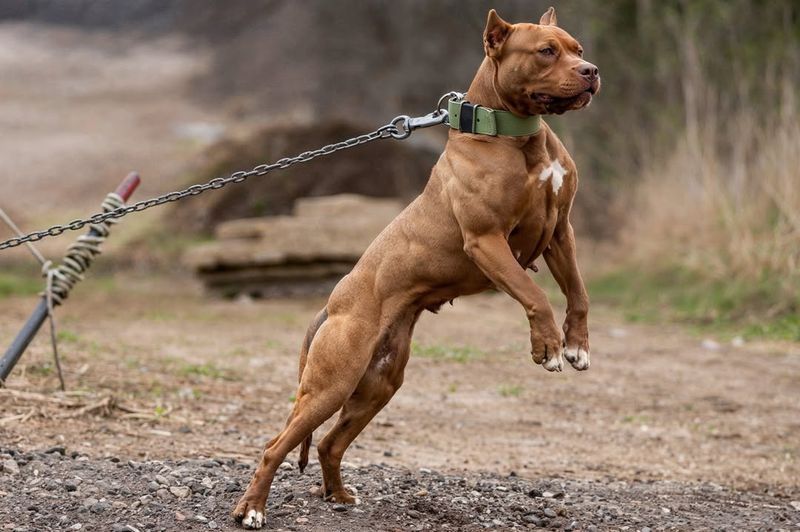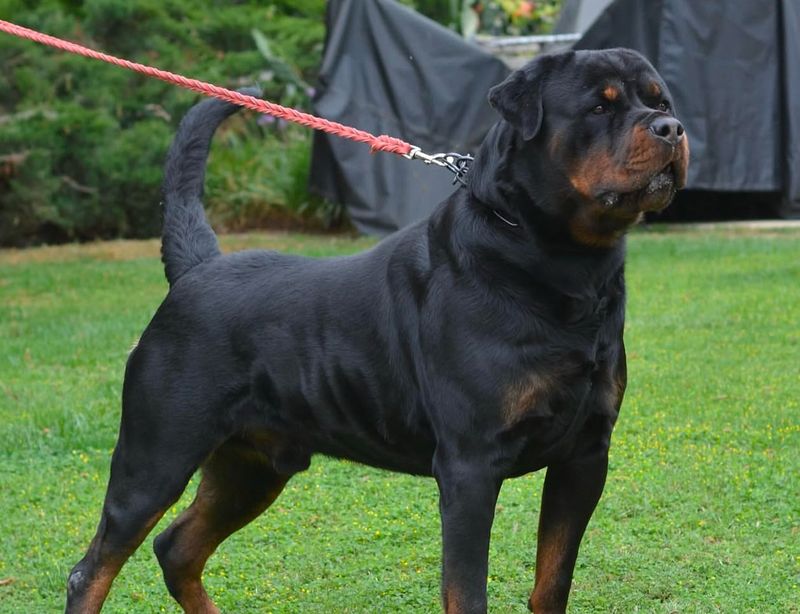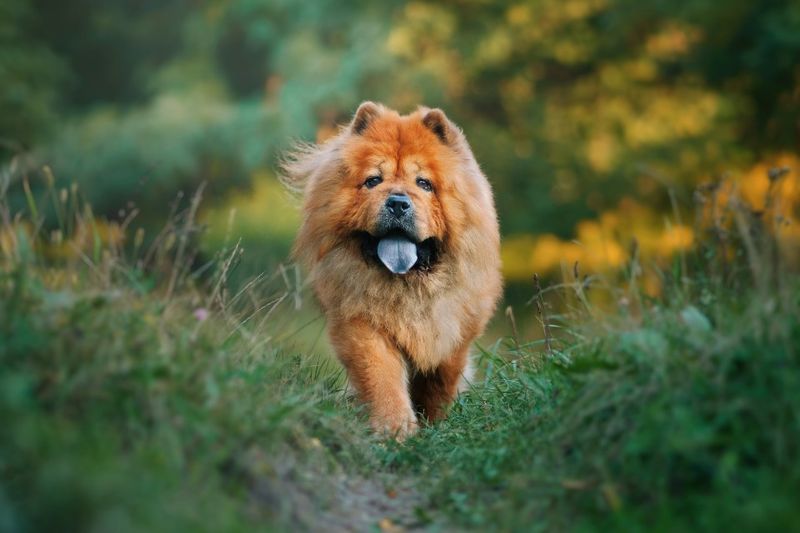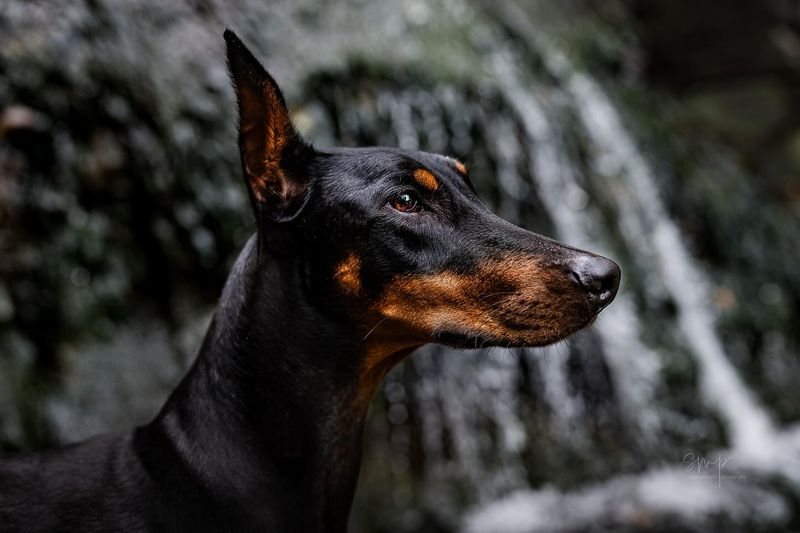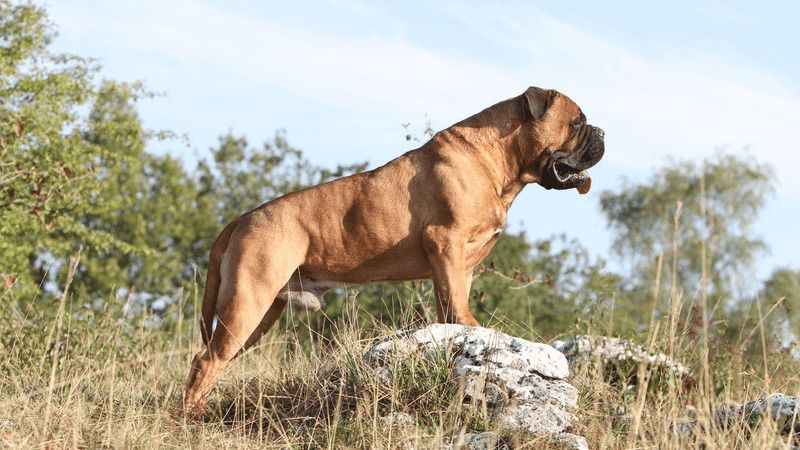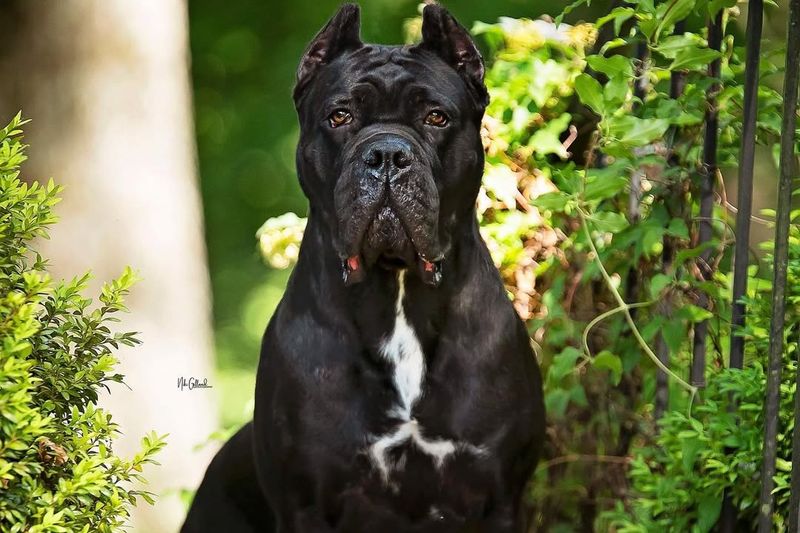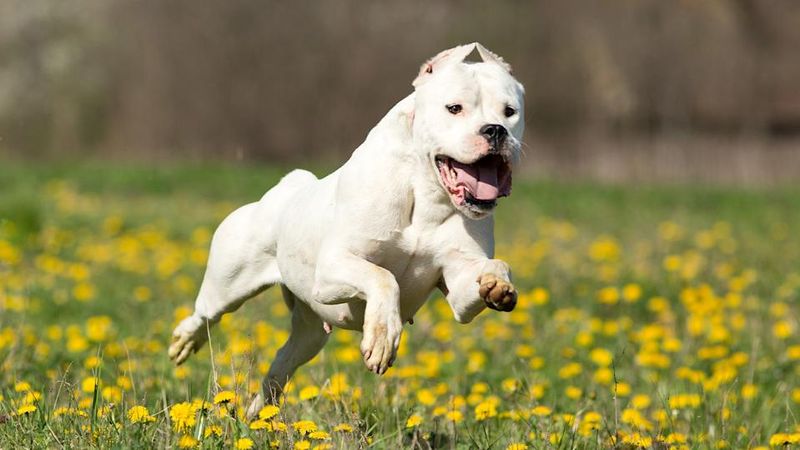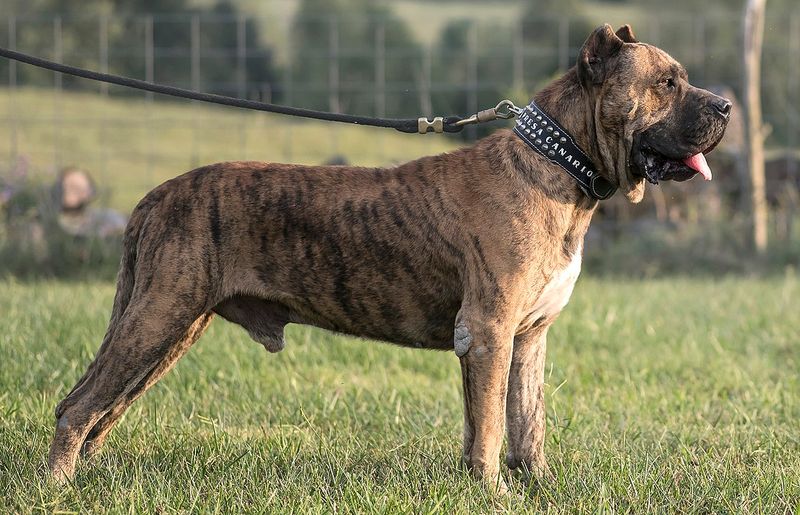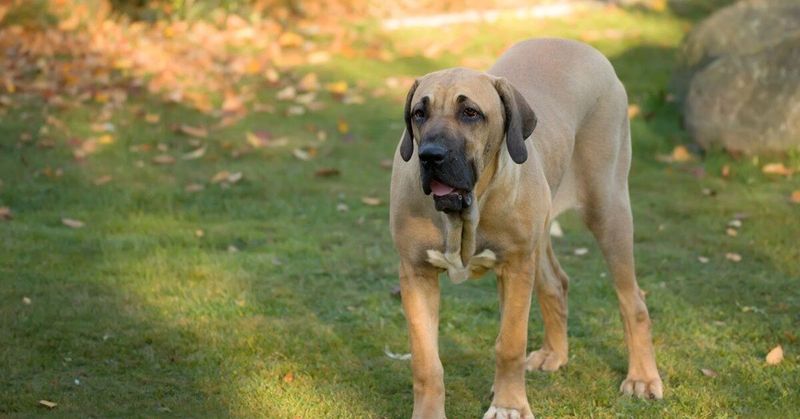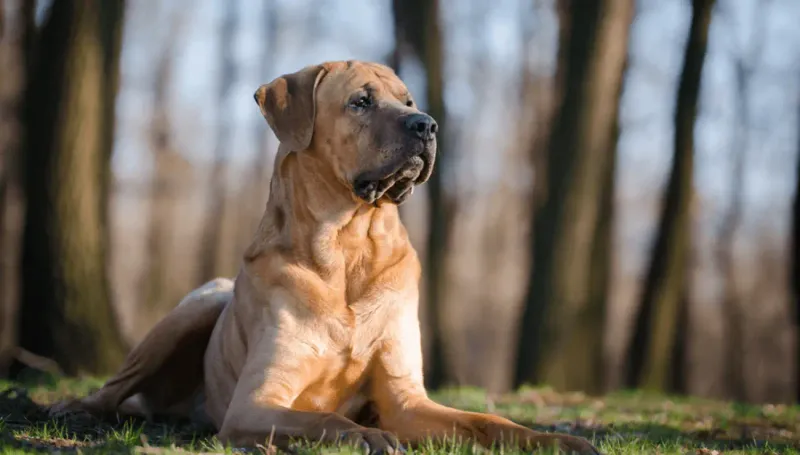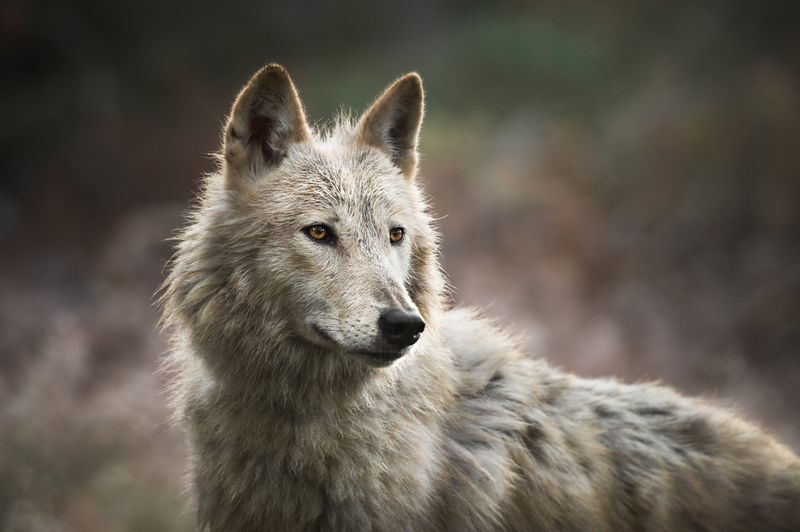This comprehensive guide delves into the world of dog breeds that have garnered a reputation for being dangerous, as well as those that are rarely seen in homes. With EXACTLY 13 entries, each one offers a unique perspective and insight into the characteristics, history, and reputation of these fascinating animals. From familiar faces to exotic breeds, this collection is sure to inform and intrigue dog lovers and skeptics alike. Each entry is crafted with precision, adhering to a strict word count and providing a vivid image prompt and search query for further exploration. Dive into a world where canine legacies are as varied as the breeds themselves.
Pit Bull Terrier
Known for its strength and tenacity, the Pit Bull Terrier often raises eyebrows. Accidents involving this breed have led to widespread debate about its temperament. While some praise its loyalty, others warn of its aggressive potential. Despite its reputation, many owners describe a loving and protective pet. Historically, Pit Bulls were used in blood sports, which contributed to their fearsome image. Today, they can be seen as devoted family members, albeit with a need for responsible ownership. Proper training and socialization from an early age are vital. Their strong build and determination require experienced handling.
Rottweiler
The Rottweiler’s imposing stature and watchful eyes often evoke caution. This breed’s history as a guard dog contributes to its vigilant demeanor. Owners appreciate its unwavering loyalty, but strangers might misinterpret its protective instincts as aggression. Well-trained Rottweilers are known for their gentle nature with family, yet they remain ever-vigilant. Socialization is key to preventing unwanted behavior. Originating in Germany, they were once used to herd livestock, a testament to their intelligence. Their assertive personality demands consistent training, ensuring they remain obedient companions.
German Shepherd
With a reputation for intelligence and versatility, the German Shepherd is a popular choice for police and military work. Its keen senses and strong protective instincts make it a formidable guardian, though it requires proper guidance. This breed is known for forming deep bonds with its human companions, often displaying a gentle side at home. Originating from Germany, it was initially bred for herding sheep. Today, its role has expanded to various service duties. Early socialization and training are essential to harness its potential and ensure a balanced demeanor.
Chow Chow
Known for their lion-like appearance, Chow Chows may seem aloof but carry an ancient legacy of guarding. With roots tracing back to Chinese nobility, they were revered for their loyalty and strength.
Their aloofness can translate to aggression if not properly socialized early on. Owners must exercise caution and patience, as these dogs prefer independence over constant attention.
Chow Chows are not naturally aggressive but protective, making them formidable watchdogs. Early training is crucial to manage their territorial instincts. Despite their reputation, they can be devoted companions with the right approach.
Doberman Pinscher
With ears perked and eyes sharp, Doberman Pinschers are the epitome of vigilance. Bred in Germany for protection, they boast both intelligence and loyalty.
These traits make them exceptional guard dogs but also require responsible handling. Known for their speed and agility, Dobermans excel in obedience training when guided correctly.
While often linked to aggression, a well-trained Doberman is a disciplined companion. Proper socialization from a young age mitigates risks. Their reputation is more about capability than inherent danger, underscoring the importance of nurture.
Bullmastiff
Despite its imposing size, the Bullmastiff is a gentle giant at heart. Originally bred to guard estates, they combine strength with a calm disposition.
Their protective nature can present challenges without proper guidance. Known for their courage and loyalty, Bullmastiffs form strong bonds with family, often acting as gentle guardians.
Training is essential to ensure their assertive instincts are controlled. Though their size may intimidate, they are loving companions when raised in a nurturing environment, dispelling myths of inherent aggression.
Cane Corso
A descendant of Roman war dogs, the Cane Corso embodies both power and elegance. This Italian breed is known for its protective nature and imposing presence.
Their loyalty to family is unmatched, yet they can be wary of strangers. Early and consistent training is vital to cultivate their calm demeanor.
Cane Corsos thrive in environments where they have a clear role. While they require experienced handling, their intelligence and devotion make them steadfast companions. Their reputation is built on history, not hostility.
Alaskan Malamute
Harnessing the spirit of the Arctic, Alaskan Malamutes are built for endurance and strength. Originating from Alaska, they were indispensable to native tribes for hauling heavy loads across icy landscapes.
Their pack mentality means they thrive in cooperative environments but can become dominant without firm leadership. Malamutes are independent thinkers, often mistaken for stubbornness.
Proper training and socialization ensure they blend well with families. While they may appear intimidating, their aggression is often overestimated. These dogs are more about teamwork than tyranny.
Dogo Argentino
Bred for big game hunting, the Dogo Argentino is a picture of tenacity and strength. Originating in Argentina, these dogs were designed to take down wild boar and pumas.
Their fearless nature requires equally bold owners. While formidable, they are loyal and loving to their families. Early training is crucial to channel their energy positively.
Misunderstood due to their hunting background, Dogos are not inherently aggressive but protective. With proper socialization, they can be affectionate companions, debunking myths of danger.
Presa Canario
Hailing from the Canary Islands, the Presa Canario commands respect with its robust stature and determined spirit. Originally used for working livestock, they exude strength and confidence.
Their natural guarding instincts make them protective of their domain. Without proper training, their assertiveness can be challenging to manage.
Despite their fierce reputation, they are affectionate with family. Early and structured training can mold them into loyal companions. The Presa Canario’s story is one of capability, not just caution.
Fila Brasileiro
A guardian of Brazilian coffee plantations, the Fila Brasileiro is known for its unwavering loyalty. Their distrust of strangers is matched by deep affection for family.
Bred for tracking and capturing, they require experienced owners to handle their assertive nature. Filas are not for novice dog owners but are rewarding for those who understand them.
Their reputation for aggression is more about protection than hostility. Proper upbringing can reveal their gentle side, proving that they’re more than their intimidating facade suggests.
Tosa Inu
Known as the ‘Sumo wrestler’ of the canine world, the Tosa Inu carries a dignified presence. This Japanese breed was developed for dog fighting, combining strength with serenity.
Tosas are revered for their courage and restraint, traits honed over centuries. Proper socialization is key to handling their independent nature.
Their mystique is often misunderstood. With the right environment, Tosas can be gentle giants, dispelling myths of aggression. They are a testament to the balance of power and peace.
Wolfdog
The Wolfdog, a hybrid of domesticated dogs and wolves, presents a unique blend of wild and tame. Their lineage evokes images of untamed wilderness.
Wolfdogs require experienced handlers due to their complex nature. They possess intense pack instincts and can be unpredictable if not properly socialized.
While their appearance may seem intimidating, they are not predisposed to aggression. With the right approach, Wolfdogs can form profound bonds with their owners. Their captivating presence is a bridge between nature and nurture.
